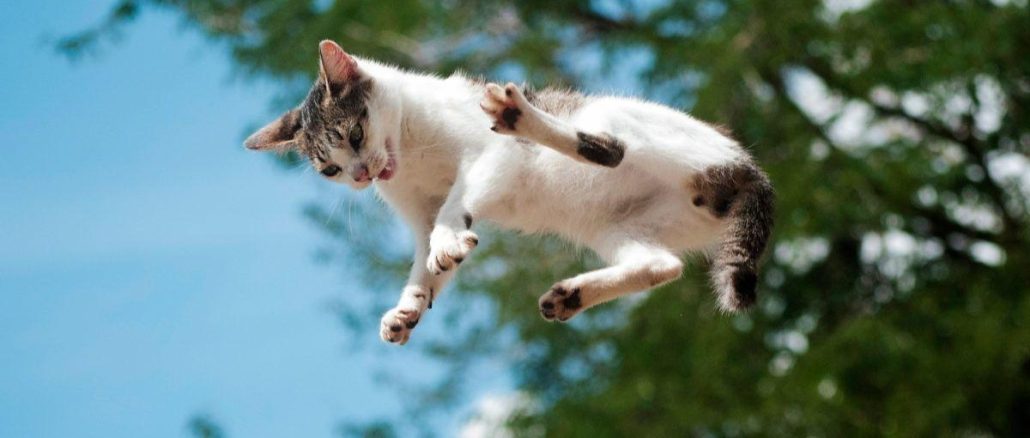
We have all heard the saying: ‘A cat always lands on its feet’, but is this true? And why? Well, with this I solve the questions physicians of all decades could not, why do cats defy the laws of physics?
Theoretically, a cat can withstand a fall from any height, at least within the earth’s atmosphere. This uncanny ability has puzzled physicists for years because the laws of physics tell us conservation of angular momentum should not allow you to just turn on a dime without some external force. Cats get around this by twisting the front and back of their bodies around in opposite directions. (like a salt or pepper grinder)
First, they tuck in their wee stubby little front legs to the front halves of their bodies which spin around first. Then, they corkscrew back in the opposite direction, swinging their hind legs around.
It is an advanced technique. Developed from decades of preparing the next generation of feline families with daily lectures in feline physics, cats have developed a gene with the ability to surpass any law of physics that binds us humans to reality and earth.
Plummeting through our atmosphere, objects reach max speed when air resistance balances out against the pull of gravity. So, based on an average cat’s size and weight (8-12 pounds) a falling cat is going to pull off 60-75 miles per hour. That is fast.
However, for these agile animals, it is quite survivable. In fact, cats have survived falls of even greater than 30 stories. Research has even shown cats are more likely to survive falls from greater than 7 stories than those at smaller heights. Once they reach max speed from top heights, cats can chill out, have a cup of tea, and relax before landing in a way that reduces injuries.
This therefore solves the mystery of feline physics. (Do I get a Nobel prize yet?)



